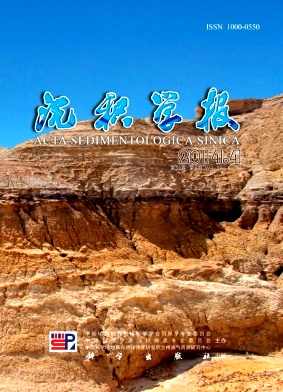Depositional Model of Modern Gentle-slope Delta: A case study from Ganjiang Delta in Poyang Lake
- Publish Date: 2014-08-10
-
Key words:
- Poyang lake /
- gentle-slope delta /
- depositional model /
- quantitative parameter /
- branching-point bar /
- combining-point bar
Abstract: In China, gentle-slope deltas have formed lots of large oilfields. As to the depositional model of gentle-slope deltas, numerous studies have been made, but most of them were on ancient strata. As different researchers may give out different interpretation about stratigraphic correlation and sedimentary environments, the depositional models summaried are various, and their reliability is low. Therefore, in this paper a modern gentle-slope delta-Gangjiang Delta in Poyang Lake-was studied systematically, through methods such as field observation and measurement, troughs, shallow boreholes, radar, grainsize analysis, etc. And the depositional model of gentle-slope delta was established. Following important conclusions were drawn through this study:① Two new types of sandbodies were found on the delta plain, i.e. branching-point bar and combining-point bar, the former occurs at the branching point of a distributary channel, and the latter occurs at the combining point of two distributary channels. This implies that branching points and combining points are also favorable place for oil and gas accumulation. ② Within channel sandbodies, three types of mud drapes are found, i.e. sheet drape, isolated drape and residual drape, and their origin was interpreted. ③ Statistics of quantitative parameters of distributary channels were made, and it was found that in downstream direction the channels become narrower as branching increases, and the width decrease about 1/2 after each branching; channel branching frequency increases; channel sinuosity decreases; channel sediment becomes finer and thinner, and sandbody interconnection degree decreases. ④ In delta front, there are no underwater distributary channels, and only mouth bars and sand sheet are developed. ⑤ Due to gentle slope, small fluctuation of lake level may cause lagre scale shifting of coastline, and may result in frequent alternation of subaerial and underwater deposits. In seismic reflection profile, gentle-slope delta deposits will not show imbricated reflection, and only show parallel or subparallel reflection.
| Citation: | Depositional Model of Modern Gentle-slope Delta: A case study from Ganjiang Delta in Poyang Lake[J]. Acta Sedimentologica Sinica, 2014, 32(4): 710-723. |






 DownLoad:
DownLoad: